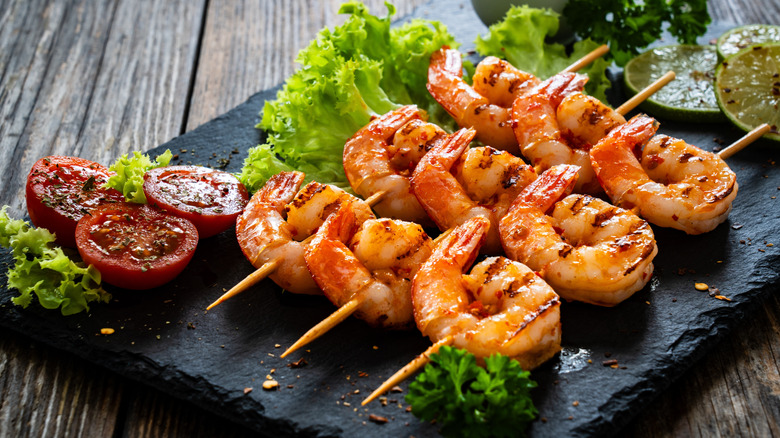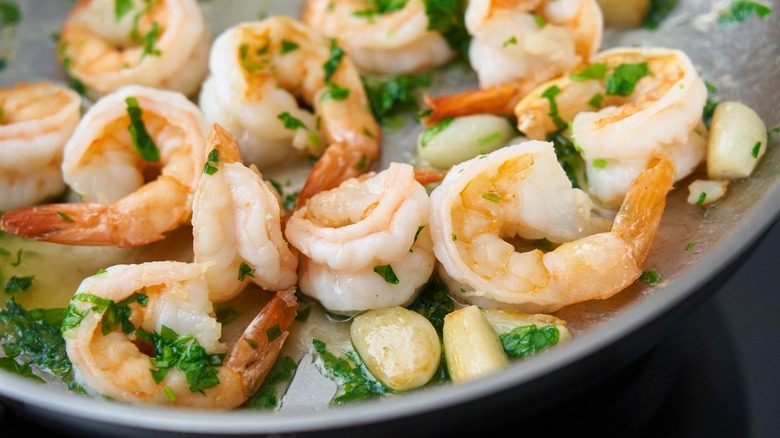How To Tell When Shrimp Is Done Cooking And Ready To Eat
Shrimp's popularity isn't surprising in the least — it's relatively affordable, high in protein, and super versatile to cook with. And once you know all the shrimp-buying secrets, it's easy to pick the tastiest crustaceans for just about any meal. But the one downside with this seafood? It's easy to overcook. Luckily, cookbook author and gourmet tour guide Roberta Muir shared how she knows when shrimp is perfectly cooked.
"Raw prawn flesh is translucent — once it's cooked, it turns opaque. As soon as that happens, you know it's cooked," she told The Takeout. Your shrimp should also change shape from a wide "U" to a firm "C" once they're ready to eat. It's even fine to undercook shrimp just slightly and let them rest until they come up to a safe temperature, which is 145 degrees Fahrenheit, but keep an eye on those visual cues! "You definitely don't want to leave it on the grill once it's opaque, or it will be overcooked," Muir warned. The moment you see that color and shape change, it's time to take them off the heat.
Tips to get the best shrimp texture
To achieve the best shrimp texture, Roberta Muir recommended this grilling method: "I butterfly shrimp in the shell and grill them only on the shell side just long enough for the flesh to turn opaque — this gives the juiciest, most tender shrimp I've ever eaten." Even if you're baking, sauteing, or air frying your shrimp instead, butterflying them is a great way to help them cook evenly and soak up more flavor from any marinades or spices.
If you want to avoid soggy shrimp, pat each piece dry with some paper towels before cooking — especially if you're using frozen shrimp. Getting rid of excess moisture is key to a good sear and flavorful bite. You should also stay away from precooked shrimp, since reheating them again is a guaranteed way to overcook them. And finally, never overcrowd your shrimp. It's always best to cook them in batches if you're working with a small surface area — otherwise they will steam instead of developing a beautiful crust. With these tips, you'll be left with tender and juicy shrimp every time.

